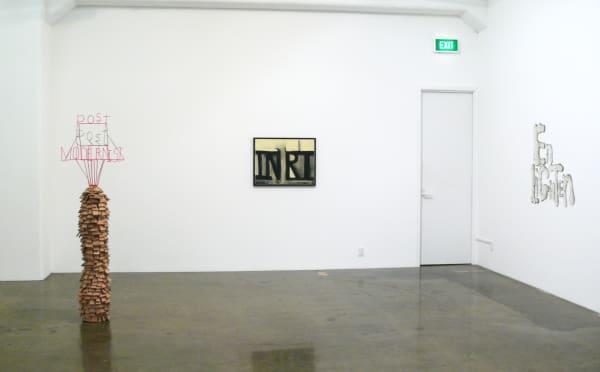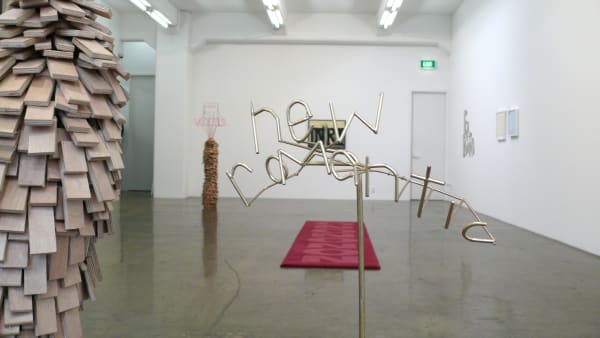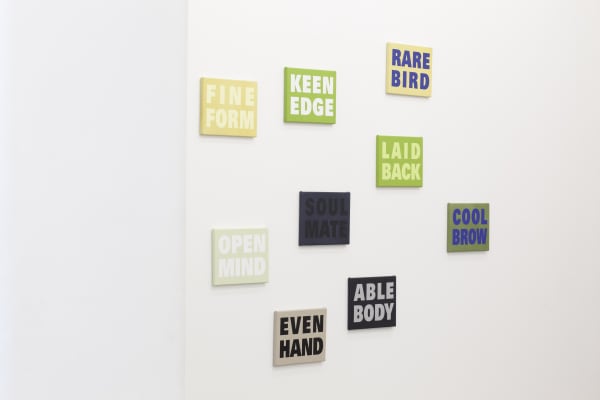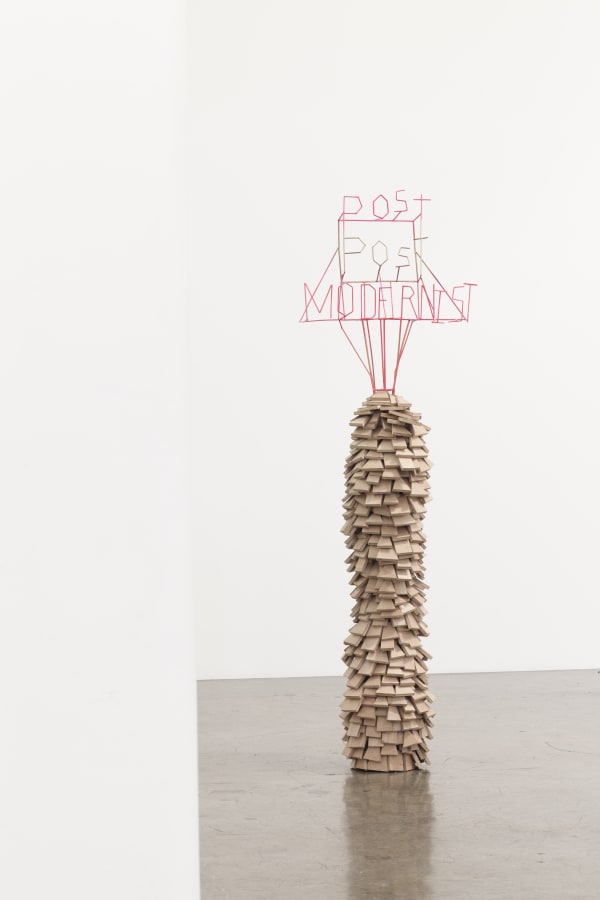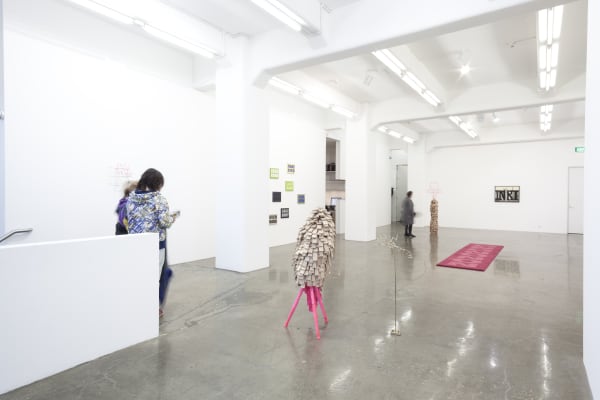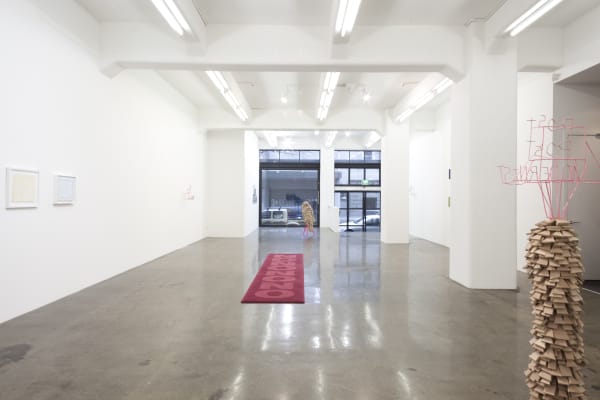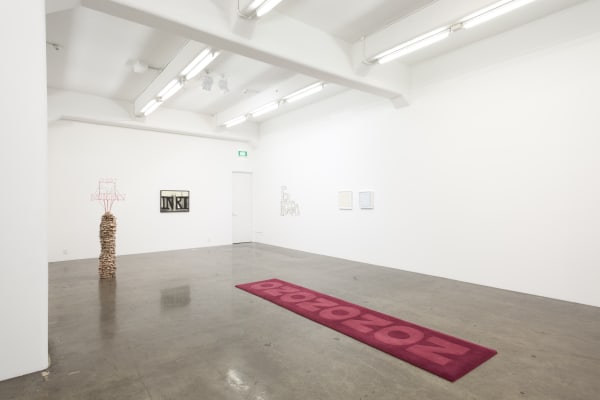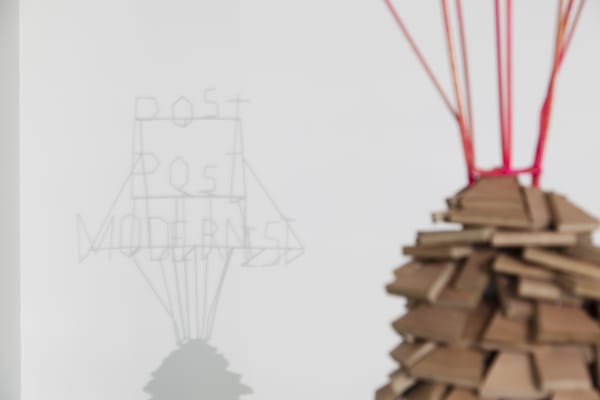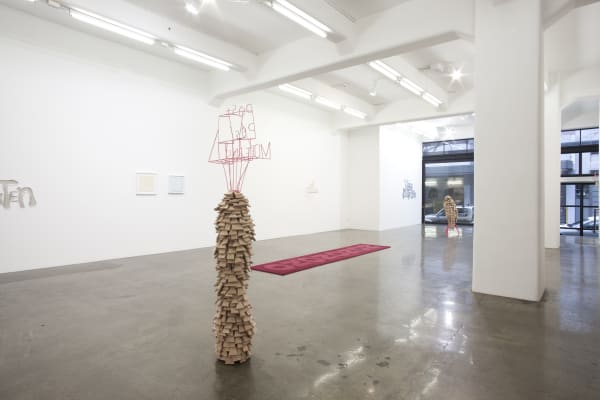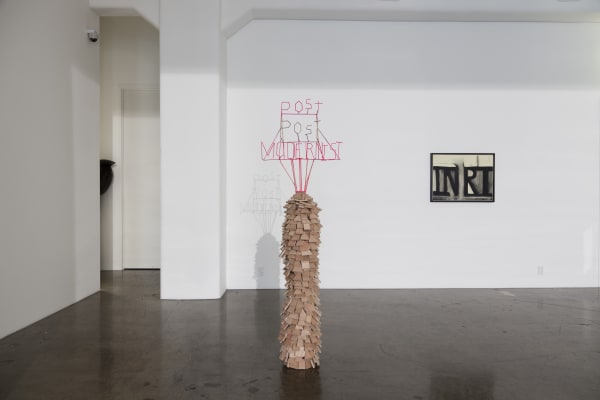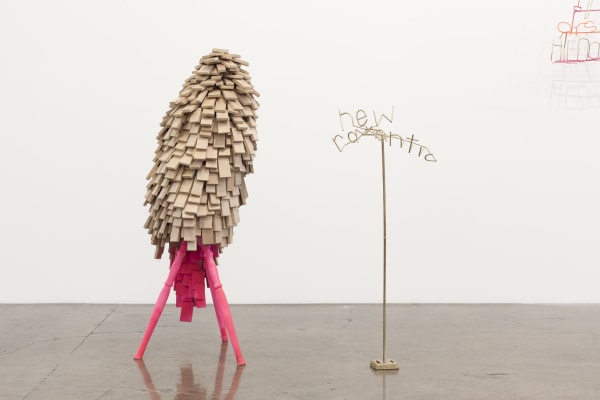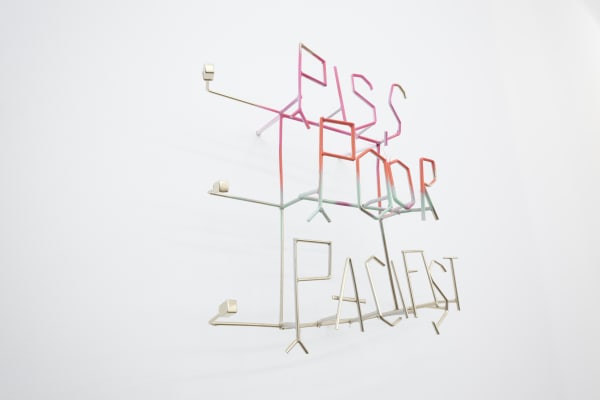WORD: Group Exhibition
Past exhibition
Overview
While image-based art is largely interpreted with some ambiguity, text-based works are often understood as direct and clear representations, even explanations of ideas. WORD, an exhibition of text-based works, seeks to illuminate how text can operate as part of a visual language. Although their approaches are multifarious, text is an idea central to the artistic practices of each of the included artists. With works from local and international artists and spanning late last century to newly commissioned works, the dynamic grouping challenges the viewer to contemplate deeper connotations of language, rather than interpreting written text as explanatory. Artists include Rob Wynne (USA), Colin McCahon (NZ), Mary-Louise Browne (NZ), Iain Cheesman (NZ) and John Giorno (USA).
Installation Views
Press release
While image-based art is largely interpreted with some ambiguity, text-based works are often understood as direct and clear representations, even explanations of ideas. WORD, an exhibition of text-based works, seeks to illuminate how text can operate as part of a visual language. Although their approaches are multifarious, text is an idea central to the artistic practices of each of the included artists. With works from local and international artists and spanning late last century to newly commissioned works, the dynamic grouping challenges the viewer to contemplate deeper connotations of language, rather than interpreting written text as explanatory. Artists include Rob Wynne (USA), Colin McCahon (NZ), Mary-Louise Browne (NZ), Iain Cheesman (NZ) and John Giorno (USA).
Questions of language inform Rob Wynne's (b.1950) seductive glass drawings. Enjoying the unpredictability of his medium, glass is poured to form loosely shaped letters and then silvered to create a mirrored effect. The hard nature of the glass material is belied by the plump, and podgy letters in Noir (2010) and Enlighten (2011) which appear to be kitschy and slapstick scepticisms. Together these works seem to address narcissism, desire and the ephemeral in a manner that is immediately accessible and amusing. When seen in New Zealand Wynne's newest work, Visible Mysteries (2011), created for WORD, has a distinctly local context. Although Colin McCahon's (1919 - 1987) series of the same title (1968) is not best described as a text-based series the relationship is nonetheless clear.
McCahon's INRI (1972) is from one of his most well-known series: Necessary Protection (1971- 75). The series brought together two of McCahon's ongoing concerns: the landscape and the visualisation of the spiritual. Here, the text references the acronym inscribed above the head of Jesus on the cross (John 19:19) and is representative of the Christian struggle for salvation. On a more literal level, the painterly division in the middle of the work can be seen to represent the abstracted landscape as viewed from his cliff-top studio at Muriwai Beach, west of Auckland.
American John Giorno (b. 1936) is widely noted as one of the most innovative and important figures of 20th Century poetry. He is a former lover of Andy Warhol and Keith Haring and the subject of Warhol's 1963 film Sleep. Giorno is a highly influential performance artist and experimental poet, acknowledged for elevating the spoken word to a high art form. Throughout his career Giorno has challenged audiences with the way that poetry is viewed. His first solo exhibition in New York, held only last year, chronicled the evolution of poem painting, some of which were part of a 1970 exhibition Information shown at MoMA. Using the materiality of the written word Giorno seeks to present poetry to new audiences in different contexts.
Mary-Louise Browne (b. 1957) is fondly known as a sculptor of words. Often exaggerated by the relationship between her materials and the connotations of her chosen words, the double entendre is a trademark of sorts for Browne. Her explorations of language often reveal several layers of meaning to seemingly simple maxims and thus challenge conventional interpretations. For WORD Browne has created a new series of leather works that suggest personality traits of her anonymous subjects.
Like Browne, sculptor Iain Cheesman (b. 1963) utilises words with intentionally ambiguous objectives. His delicate word drawings, cobbled together in welded plastic, could be name calling or perhaps, less singularly, a classification on a socio-genre. In New Romantics (2010) the text has what Cheesman refers to as a bodily accompaniment - a part plinth or reconfigured torso that partners the text work. The layered wooden segments sit like a semi jumbled pieces of writing or discarded pages; like a compilation of alienated parts or fragmented narratives.
The works exhibited here desire a considered approach as, although text-based, they cannot be simply read. Like the exhibition title itself, the works chosen for WORD have no single meaning. Text is a shared method that likens this grouping of disparate artworks and as a group, reminds us that text operates as part of a greater visual language not merely as explanations of ideas. Word
(exhibition text, Anna Jackson, 2011)
Questions of language inform Rob Wynne's (b.1950) seductive glass drawings. Enjoying the unpredictability of his medium, glass is poured to form loosely shaped letters and then silvered to create a mirrored effect. The hard nature of the glass material is belied by the plump, and podgy letters in Noir (2010) and Enlighten (2011) which appear to be kitschy and slapstick scepticisms. Together these works seem to address narcissism, desire and the ephemeral in a manner that is immediately accessible and amusing. When seen in New Zealand Wynne's newest work, Visible Mysteries (2011), created for WORD, has a distinctly local context. Although Colin McCahon's (1919 - 1987) series of the same title (1968) is not best described as a text-based series the relationship is nonetheless clear.
McCahon's INRI (1972) is from one of his most well-known series: Necessary Protection (1971- 75). The series brought together two of McCahon's ongoing concerns: the landscape and the visualisation of the spiritual. Here, the text references the acronym inscribed above the head of Jesus on the cross (John 19:19) and is representative of the Christian struggle for salvation. On a more literal level, the painterly division in the middle of the work can be seen to represent the abstracted landscape as viewed from his cliff-top studio at Muriwai Beach, west of Auckland.
American John Giorno (b. 1936) is widely noted as one of the most innovative and important figures of 20th Century poetry. He is a former lover of Andy Warhol and Keith Haring and the subject of Warhol's 1963 film Sleep. Giorno is a highly influential performance artist and experimental poet, acknowledged for elevating the spoken word to a high art form. Throughout his career Giorno has challenged audiences with the way that poetry is viewed. His first solo exhibition in New York, held only last year, chronicled the evolution of poem painting, some of which were part of a 1970 exhibition Information shown at MoMA. Using the materiality of the written word Giorno seeks to present poetry to new audiences in different contexts.
Mary-Louise Browne (b. 1957) is fondly known as a sculptor of words. Often exaggerated by the relationship between her materials and the connotations of her chosen words, the double entendre is a trademark of sorts for Browne. Her explorations of language often reveal several layers of meaning to seemingly simple maxims and thus challenge conventional interpretations. For WORD Browne has created a new series of leather works that suggest personality traits of her anonymous subjects.
Like Browne, sculptor Iain Cheesman (b. 1963) utilises words with intentionally ambiguous objectives. His delicate word drawings, cobbled together in welded plastic, could be name calling or perhaps, less singularly, a classification on a socio-genre. In New Romantics (2010) the text has what Cheesman refers to as a bodily accompaniment - a part plinth or reconfigured torso that partners the text work. The layered wooden segments sit like a semi jumbled pieces of writing or discarded pages; like a compilation of alienated parts or fragmented narratives.
The works exhibited here desire a considered approach as, although text-based, they cannot be simply read. Like the exhibition title itself, the works chosen for WORD have no single meaning. Text is a shared method that likens this grouping of disparate artworks and as a group, reminds us that text operates as part of a greater visual language not merely as explanations of ideas. Word
(exhibition text, Anna Jackson, 2011)
Enquire


